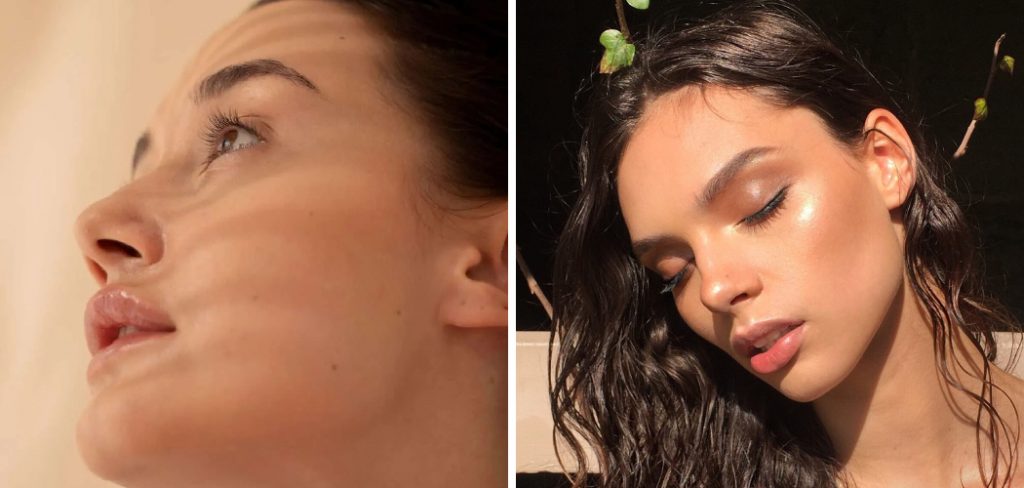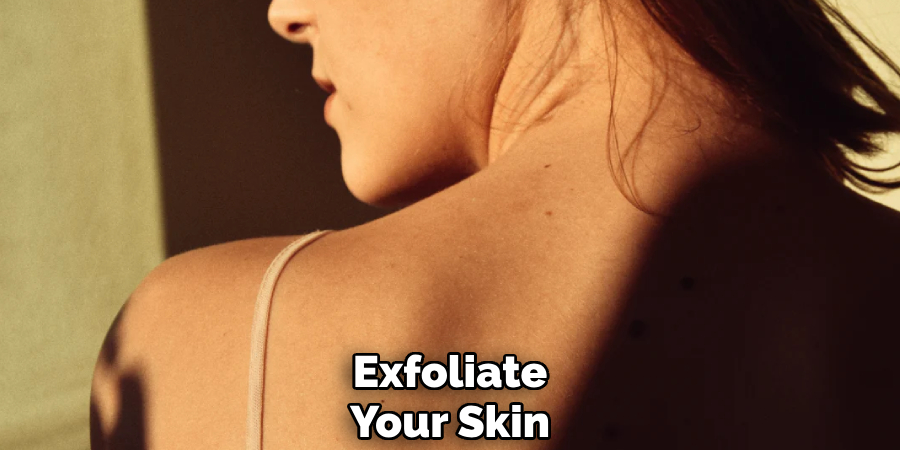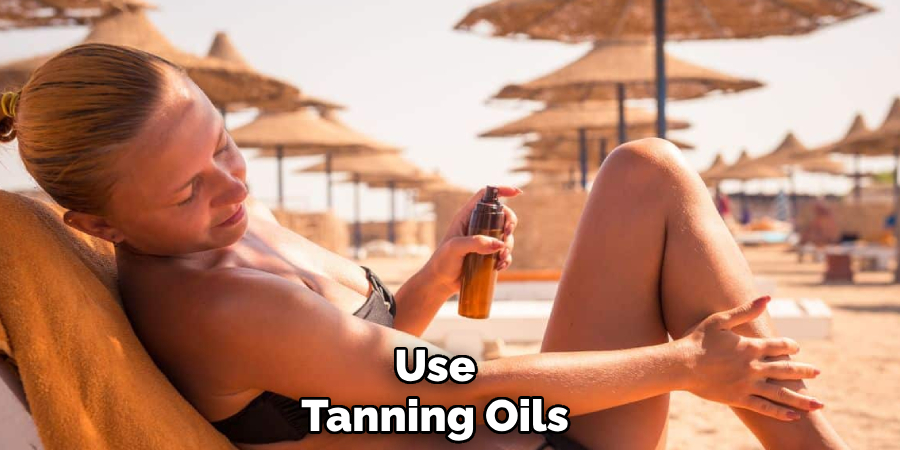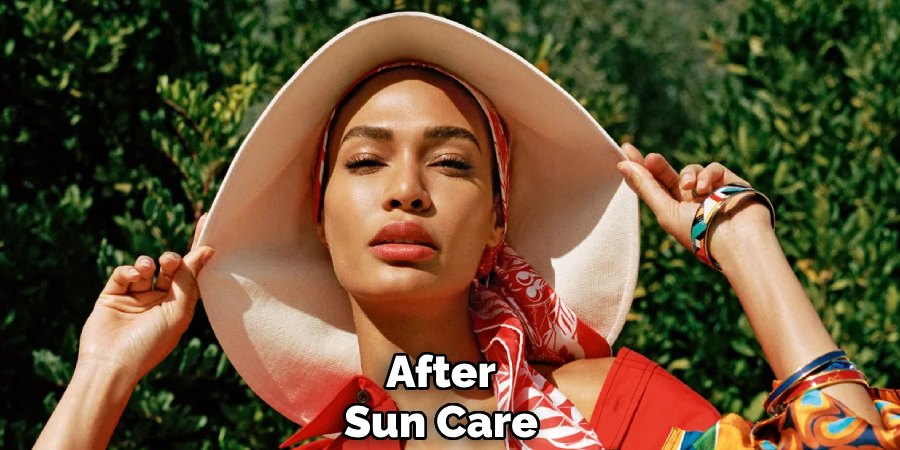Are you longing for that perfect sun-kissed glow? Well, we’ve got you covered! Achieving a natural sun-kissed complexion is easier than you think. In this guide, we’ll walk you through the steps on how to get sun kissed skin without damaging your skin.

Many people desire sun-kissed skin that radiates warmth and vitality. Whether you’re preparing for a special occasion or simply want to enhance your natural beauty, there are safe and effective ways to achieve that sun-kissed glow.
By following a mix of skincare routines, sun exposure tips, and alternative methods like self-tanners, you can enjoy radiant, bronzed skin while minimizing the risk of damage from harmful UV rays.
What Are the Benefits of Having Sun-Kissed Skin?
There are many benefits to having sunkissed makeup look summer glow, both physically and mentally. Here are some reasons why people strive for that golden glow:
- A sun-kissed complexion can make you look healthier and more radiant. It gives the appearance of a natural flush and adds warmth to your overall complexion.
- Sun exposure has been shown to positively affect mood by increasing serotonin levels in the brain. This can lead to feelings of happiness and well-being.
- Getting some sun exposure is essential for our bodies to produce vitamin D, which is crucial for maintaining strong bones and a healthy immune system.
- Many people feel more confident with a tan, which can help to even out skin tone and hide imperfections.
- Sun exposure can also have anti-inflammatory effects, helping to soothe skin conditions such as psoriasis and eczema.
What Will You Need?
To take advantage of the benefits of sun exposure, you will need a few essential items:
- Sunscreen With SPF 30 or Higher: It is essential to protect your skin from harmful UV rays while getting some sun. Look for a sunscreen that provides broad-spectrum protection against UVA and UVB rays.
- Sunglasses: Protecting your eyes from the sun’s glare is crucial to prevent eye damage and discomfort.
- A Hat: Wearing a hat can provide additional protection for your face and scalp, areas that are often forgotten when applying sunscreen.
- Water: Staying hydrated is key when spending time in the sun. Make sure to bring along a water bottle to keep yourself adequately hydrated.
- Shade: When spending prolonged periods in the sun, seek shaded areas. This will give your skin and body a break from direct sunlight and help prevent overheating.
- Clothing: Lightweight, loose-fitting clothing can provide additional protection from the sun’s rays. Opt for light colors that reflect sunlight instead of dark colors that absorb it.
10 Easy Steps on How to Get Sun Kissed Skin
Step 1. Exfoliate Your Skin:
Start by gently exfoliating your skin to remove dead skin cells and create a smooth base for even tanning. You can use a natural exfoliant, such as a sugar scrub or a loofah, especially on rough areas like elbows, knees, and ankles.

Exfoliating helps your tan last longer and ensures that your skin absorbs the sunlight or tanning products more evenly. Be sure not to scrub too harshly to avoid irritation, leaving your skin refreshed and ready to soak up that golden glow!
Step 2. Apply Sunscreen:
Applying sunscreen is crucial in protecting your skin while achieving a beautiful tan. Choose a broad-spectrum sunscreen with at least SPF 30 to shield your skin from harmful UVA and UVB rays. Apply it evenly across all exposed areas of your body, paying special attention to commonly missed spots like the ears, back of the neck, and tops of your feet.
Allow the sunscreen to absorb into your skin for at least 15-20 minutes before heading outdoors. Reapply every two hours to keep your skin protected throughout the day, or more frequently if you are swimming or sweating.
Step 3. Choose the Right Time:
Timing is crucial for minimizing sun exposure and reducing the risk of skin damage. Plan your outdoor activities for early morning or late afternoon, when the sun’s rays are less intense. UV radiation is at its peak between 10 a.m. and 4 p.m.,
so it’s best to seek shade or stay indoors during this period. You can enjoy the outdoors while protecting your skin and overall health by choosing the right time to be outside.
Step 4. Moisturize Regularly:
Keeping your skin hydrated is essential for maintaining its health and appearance, especially after sun exposure. Use a high-quality moisturizer that suits your skin type to help replenish lost moisture and repair the skin barrier. Look for products containing ingredients like hyaluronic acid, aloe vera, or glycerin, which are known for their hydrating properties.
For optimal results, apply moisturizer while your skin is still slightly damp to lock in hydration. Consistent moisturizing can help soothe dryness, prevent peeling, and keep your skin feeling soft and smooth.

Step 5. Stay Hydrated:
Drinking plenty of water is essential for maintaining healthy, hydrated skin. Proper hydration helps flush out toxins, supports overall bodily functions, and promotes a radiant complexion. Aim to drink at least eight glasses of water daily, and consider increasing your intake during hot or dry conditions or after physical activity.
Additionally, consuming water-rich foods like fruits and vegetables can further support hydration. Staying adequately hydrated from within complements your skincare efforts, ensuring your skin remains supple and glowing.
Step 6. Move Regularly:
Engaging in regular physical activity is essential for maintaining overall health and well-being. Movement increases blood circulation, which helps deliver oxygen and nutrients to the skin, promoting a healthy glow. Regular exercise also supports the body’s natural detoxification process by encouraging sweat, which can help clear out impurities.
Whether it’s yoga, walking, dancing, or more intense workouts, find an activity you enjoy to stay consistent. Remember, movement not only benefits your skin but also boosts your mood, reduces stress, and strengthens your body. Aim for at least 30 minutes of physical activity most days of the week to reap these benefits.
Step 7. Tan Gradually:
Achieving a sun-kissed glow requires patience and care to protect your skin’s health. Avoid intense, prolonged sun exposure, especially during peak hours when UV rays are strongest. Instead, allow your skin to tan gradually by spending short intervals outdoors, gradually increasing your time in the sun.
Always apply sunscreen with adequate SPF, even if you’re tanning, to shield your skin from harmful UV radiation and prevent burns or long-term damage. Incorporate protective accessories like wide-brim hats and sunglasses for additional safety. Gradual tanning helps maintain your skin’s condition while achieving a natural and even complexion.
Step 8. Use Tanning Oils:
Tanning oils can enhance the tanning process by promoting the absorption of UV rays, helping you achieve a deeper and more even tan. When selecting a tanning oil, look for nourishing ingredients like coconut, argan, or aloe vera to keep your skin hydrated and smooth.

Remember, tanning oils should be used with sunscreen to protect your skin from harmful UV radiation. Apply the oil evenly to your skin and reapply as needed, especially after swimming or sweating, to maintain optimal results. Always prioritize skin health while tanning.
Step 9. Wear Sunglasses and a Hat:
Protecting your eyes and face from the sun is essential outdoors. UV rays can cause damage to your eyes and may accelerate skin aging around the delicate eye area. Choose sunglasses with 100% UV protection to shield your eyes from harmful rays.
Additionally, wearing a wide-brimmed hat can provide extra shade and protection for your face, neck, and ears. This simple step not only enhances your comfort but also plays a crucial role in maintaining your overall skin and eye health.
Step 10. After-Sun Care:
After spending time in the sun, taking care of your skin to restore moisture and prevent potential damage is essential. Start by applying a soothing after-sun lotion or aloe vera gel to rehydrate and cool the skin. This can help reduce redness and irritation caused by sun exposure.
A lukewarm shower can also help wash away sweat, salt, or chlorine while gentle on your skin. If you notice any signs of sunburn, such as peeling or excessive redness, use specialized sunburn relief products and ensure you stay hydrated to support your skin’s healing process. After-sun care into your routine ensures your skin remains healthy and rejuvenated, even after long days outdoors.
By following these after-sun care tips, you can prevent long-term damage to your skin and maintain its youthful appearance.

Conclusion
How to get sun kissed skin requires a balanced approach that prioritizes skin health and protection.
Start by using a high-quality sunscreen to shield your skin from harmful UV rays while still allowing for a touch of sun exposure. Incorporate a healthy diet rich in antioxidants to nourish your skin from within, and stay hydrated to maintain its natural glow. For those who prefer a safer alternative, consider using self-tanning products to achieve a radiant look without sun exposure.
Remember, maintaining your skin’s health is key to achieving and sustaining that sun-kissed glow.
About the Author
Jane Hubbard is a passionate beauty expert with a wealth of experience in makeup, hair, and overall beauty techniques. After years of working as a hairdresser specialist, she followed her entrepreneurial spirit and started her own consultancy business.
Jane has always been driven by her desire to help others feel confident in their own skin, and she does this by sharing her knowledge, experiences, and practical beauty tips. Through her consultancy, she empowers individuals to embrace their unique beauty, offering tailored guidance that boosts both self-esteem and personal style.
Professional Focus
- Specializes in makeup, hairstyling, and beauty consulting.
- Provides personalized beauty advice, tips, and techniques to help individuals feel confident in their appearance.
- Dedicated to staying up-to-date with the latest industry trends and developments.
- Passionate about creating a comfortable and empowering experience for every client.
Education History
- University of Craft and Design – Bachelor of Fine Arts (BFA) in Woodworking and Furniture Design
- Woodworking Apprenticeships – Extensive hands-on training with skilled craftsmen to refine carpentry and furniture making techniques
- Online Courses & Masterclasses – Continued education in advanced woodworking techniques, design principles, and specialized tools
Expertise:
- Makeup artistry, hairstyling, and beauty consulting.
- Personalized beauty techniques to enhance confidence and self-expression.
- Educating clients on how to maintain their beauty routines at home.
